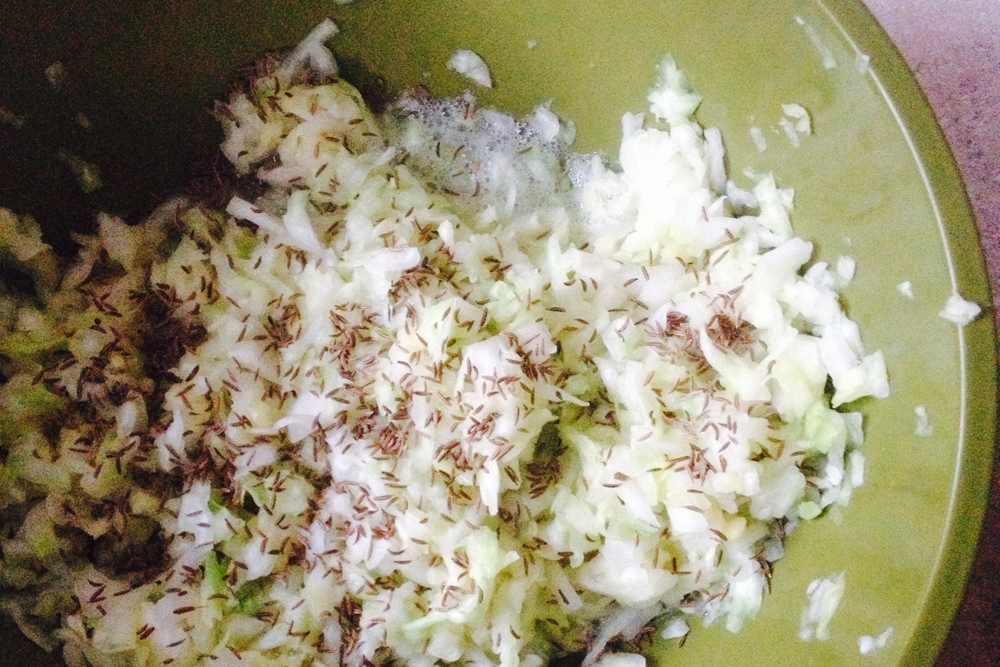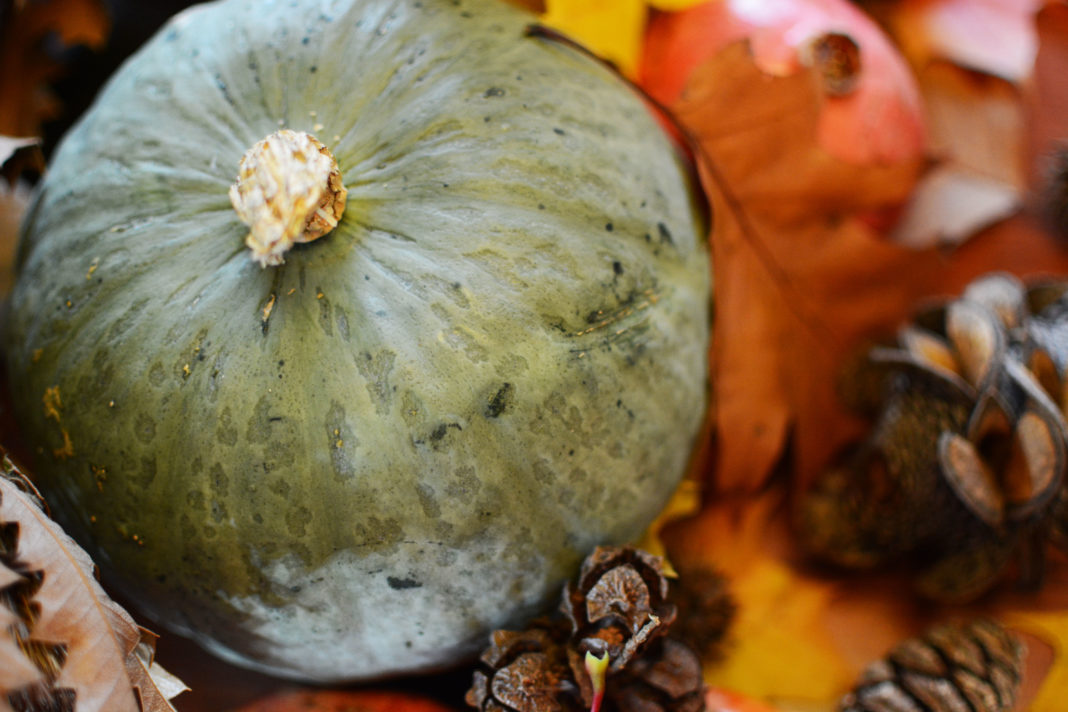Born and raised in a Polish home, I am no stranger to sauerkraut. Cabbage is practically in my blood. Though I’ve eaten sauerkraut in every conceivable way, there was never any talk of making it. I had a misty idea that it was made in barrels and involved a mysterious process of magic and wizardry. When a friend told me that she made a batch at home I was stunned.
It turns out that there are no barrels or wizarding skills required, just a few mason jars, some weights, cabbage, salt, and a bit of fabric and string. It’s also delightfully economical. I spent about $11 for the whole kit and caboodle.
Start by washing your jars, weights and hands thoroughly. When buying your jars, check to make sure that the small jar fits all of the way inside the large jar. Place your weights in the smaller jar. Pull out your cabbage and remove any outer leaves that may have become soft. Set aside one firm cabbage leaf for later.
Cut the cabbage into even quarters and remove the stem. Cut the quarters into eighths, then turn these crossways and slice into thin shreds. Toss the cabbage into a large mixing bowl and sprinkle the salt over the top.
Knead the cabbage for about five to 10 minutes. After a few minutes you’ll notice a bubbling, hissing sound and start to see and feel a bit of foamy liquid. This is good! The cabbage is breaking down and the process of fermentation is beginning. This may be the only time in your life that you find yourself massaging a cabbage, so enjoy it!
Once the cabbage has noticeably softened, mix in the caraway seeds. Stuff the cabbage into the large mason jar, tamping it down with your hands as you go and pouring any resulting liquid over the top. Take the cabbage leaf that you set aside and place it over the top of the sauerkraut. This leaf will neatly contain the kraut and help to keep it immersed in brine.
Set the weighted jar on top of the cabbage leaf. Cover the large jar with a bit of cloth and fasten with a rubber band or piece of string. This will keep bugs out but still allow air to pass through.
For the first 24 hours you’ll want to tamp down the kraut relatively often. Once a day has passed, check to make sure that the sauerkraut is submerged in brine. If it is not, mix 1 teaspoon of salt with 1 cup water and pour over the kraut until it is immersed.
Keep the jar away from strong sunlight and in a cooler location (preferably somewhere between 65 and 75 degrees). If the environment is too hot, the sauerkraut has the potential to go bad or get moldy. Similarly, if you try to ferment your sauerkraut in an environment that’s too cold, such as the refrigerator, the fermentation process will be halted completely and all you’ll get for all your hard work is a batch of cold, inedible cabbage.
Normally it takes three to 10 days for the sauerkraut to fully ferment. It stays good for two months or longer
if refrigerated.
Recipe adapted from thekitchn.com.






